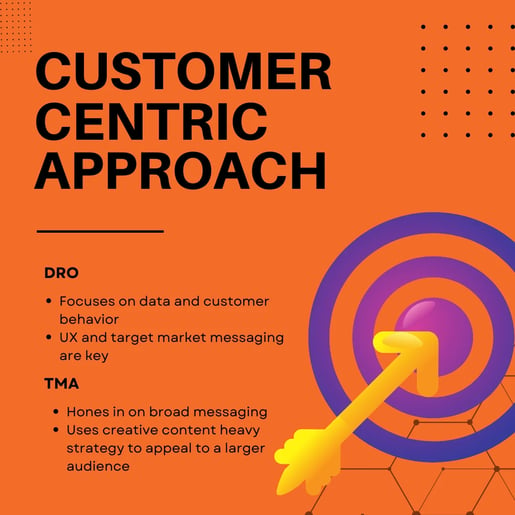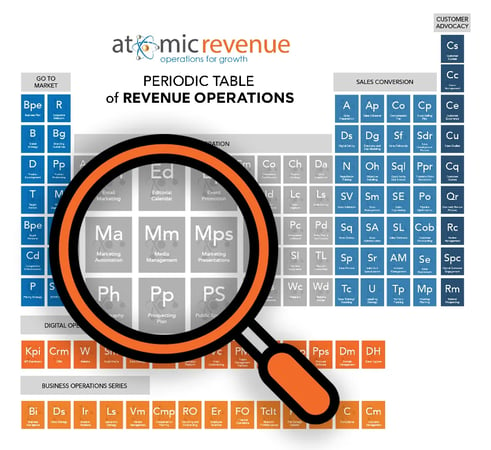
As a new member of Atomic Revenue, I can appreciate the different approaches in achieving success for company brands. In the ever-evolving world of marketing, two distinct perspectives are emerging: Digital Revenue Operations (DRO) and Traditional Marketing Agencies. Both occupy crucial positions on the marketing spectrum, and offer unique attributes that merit careful consideration before choosing which makes sense for your company.
Scope of Operations
Digital Revenue Operations: The realm of DRO extends far beyond traditional boundaries, encompassing lead generation, customer acquisition, conversion optimization, and revenue generation. Digital channels and cutting-edge technologies are seamlessly integrated across the entire customer journey with an emphasis on outcomes and operational efficiency.
Traditional Marketing Agency: In contrast, traditional agencies may hone in on specific aspects like advertising, public relations, or creative services. While they may incorporate digital elements, their scope tends to focus specifically on promoting brands, products, and services.
Data-Driven vs. Creative-Centric
Digital Revenue Operations: Data and analytics take center stage in DRO, driving informed decision-making. The focus is on measurable outcomes, leveraging technology and automation to optimize marketing processes and maximizing return on investment.
Traditional Marketing Agency: Traditional agencies strike a balance between data and creativity, with a strong emphasis on creative aspects such as design, branding, and storytelling. Much of Traditional Marketing data focuses on audience reach and click-through/engagement rates.
 Technology Integration
Technology Integration
Digital Revenue Operations: DRO leverages a broad spectrum of marketing technologies, automation tools, and data analytics platforms. Digital Marketing success depends on the integration of Customer Relationship Management (CRM) systems with marketing and sales automation augmented by intelligence, efficiency, content management, Ai, and analytics tools.
Traditional Marketing Agency: While technology is definitely utilized, traditional agencies rely on the tools and technologies specific to their own work, not the integration of those tools with all the other marketing tools and technologies utilized by a business Traditional agencies may not exhibit the same level of integration and reliance on advanced marketing technology.
 Customer-Centric Approach
Customer-Centric Approach
Digital Revenue Operations: DRO places a premium on a customer-centric approach, utilizing data to understand customer behavior and preferences. Personalization, data governance, user experience, and targeted market/customer messaging are integral components.
Traditional Marketing Agency: Customer focus is crucial, but traditional agencies may emphasize broad messaging and creative campaigns designed to appeal to a wider audience.
Agility and Adaptability
Digital Revenue Operations: The digital landscape demands agility and adaptability. DRO operates in a fast-paced environment, where continuous optimization and quick adjustments based on real-time data are the norm.
Traditional Marketing Agency: Traditional agencies may adhere to a more structured and slower-paced workflow, potentially requiring more time and effort to adapt to rapid changes.
Performance Measurement
 Digital Revenue Operations: Measurable Key Performance Indicators (KPIs) tied to revenue and business outcomes are the lifeblood of DRO. Metrics such as conversion rates, customer lifetime value, and return on ad spend are closely monitored.
Digital Revenue Operations: Measurable Key Performance Indicators (KPIs) tied to revenue and business outcomes are the lifeblood of DRO. Metrics such as conversion rates, customer lifetime value, and return on ad spend are closely monitored.
Traditional Marketing Agency: Traditional agencies rely on a combination of quantitative and qualitative metrics. While quantitative data is considered, qualitative feedback and metrics related to brand awareness and impressions play a more significant role.
In summary...
The decision shouldn't be made lightly, as both perspectives play crucial roles and serve distinct purposes for a brand. As businesses navigate the dynamic marketing landscape, a clear understanding of the nuances between these two approaches becomes essential for formulating effective and impactful marketing strategies in the digital age. As a digital marketer with 10+years of traditional agency experience, it’s an exciting time to join the Atomic Revenue team and pivot my own work towards more data driven, revenue based optimizations and strategic planning. Branding and creative are so important, but at the end of the day, your work needs to succeed financially. We at Atomic Revenue are here to make sure that happens!
 About the Author
About the Author
With 15 years of experience in Digital Marketing, Rebecca joins the Atomic team as a Digital Strategist. Her background has largely focused on paid and organic advertising both on search and social platforms. She has worked with a wide range of business types including tech, start up, heath care and retail. She's a terrific storyteller and creates engaging content and strategy that reaches the right audience for her clients. She knows what's required for a strong digital presence and works hard to bring vision to life with strong communication and clarity.





